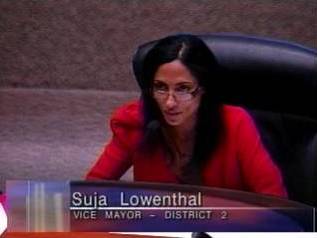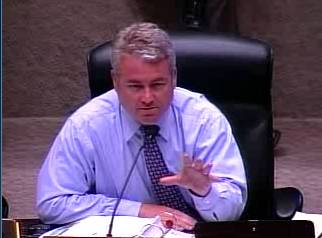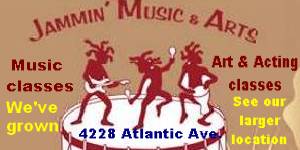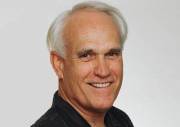(Sept. 23, 2010) -- On Sept. 21, the City Council voted 7-1 (Johnson dissenting, Gabelich absent) to enter into agreements with Pennsylvania-based Urban Innovations (a private firm) to guide LB City Hall in seeking grant money from regional and federal agencies to fund an "alternative transportation analysis" that would identify ways to connect some southshore locations linking downtown/southshore sites using traditional bus and waterway routes as well as "non-traditional approaches" including "ground-based cable drawn trams and aerial gondola ropeway systems."
City management recommended Council approval of the first phase of the proposal, which initially came from an unsolicited proposal heard and forwarded in August by the Council's Harbor & Tidelands Committee (Lowenthal, DeLong, Garcia).
On Sept. 21, the Council motion to approve was made by Councilman Gary DeLong and seconded by Councilman Dee Andrews. The Council presentation by Urban Innovation's president, Robert Ardolino, used the Power Point previously presented to the Harbor and Tidelands Committee in August.
Mayor Foster left the Council Chamber as the item came up; Vice Mayor Lowenthal presided during Council discussion which she opened with a statement that included the following:
 Vice Mayor Lowenthal: ...I see the issue as two fold. On a practical level, how do we encourage greater economic prosperity on both sides of the channel through alternative transportation but on a more inspired level, how can we continue to establish Long Beach as a destination for tourism, conventions and other economic activity?...[T]he downtown and shoreline are a major economic engine already, second only to the Port of Long Beach, and these 50+ acres next to the Queen Mary hold great potential on a variety of levels. Now is the time certainly for us to propose and evaluate solutions to access its connectivity concerns associated with the south shores area.
Vice Mayor Lowenthal: ...I see the issue as two fold. On a practical level, how do we encourage greater economic prosperity on both sides of the channel through alternative transportation but on a more inspired level, how can we continue to establish Long Beach as a destination for tourism, conventions and other economic activity?...[T]he downtown and shoreline are a major economic engine already, second only to the Port of Long Beach, and these 50+ acres next to the Queen Mary hold great potential on a variety of levels. Now is the time certainly for us to propose and evaluate solutions to access its connectivity concerns associated with the south shores area.
[All photos in this story via City Council webcast]
 Councilmembers Robert Garcia (photo right) and Dee Andrews voiced support for addressing what they described as transportation issues; Councilman Garcia portrayed the process as a way of seeing if there was "federal interest" in the project [applying a term from the Breakwater study], but Vice Mayor Lowenthal acknowledged during Council discussion that a federal agency had already indicated its willingness to provide funding for a transportation analysis, and did so when Mr. Ardolino's firm guided an application submitted by the prior Queen Mary operator (which was unable to proceed). In contrast, on this application the City of Long Beach itself will be the applicant, not a third party.
Councilmembers Robert Garcia (photo right) and Dee Andrews voiced support for addressing what they described as transportation issues; Councilman Garcia portrayed the process as a way of seeing if there was "federal interest" in the project [applying a term from the Breakwater study], but Vice Mayor Lowenthal acknowledged during Council discussion that a federal agency had already indicated its willingness to provide funding for a transportation analysis, and did so when Mr. Ardolino's firm guided an application submitted by the prior Queen Mary operator (which was unable to proceed). In contrast, on this application the City of Long Beach itself will be the applicant, not a third party.
 Councilman Patrick O'Donnell asked city management, "How can we ensure that this won't cost the city any money?" Public works Director Mike Conway replied that the project is designed to proceed in phases, with no costs for the first phase (being voted on by the Council now) with voted Council approval sought for future phases.
Councilman Patrick O'Donnell asked city management, "How can we ensure that this won't cost the city any money?" Public works Director Mike Conway replied that the project is designed to proceed in phases, with no costs for the first phase (being voted on by the Council now) with voted Council approval sought for future phases.
In response, Councilman O'Donnell stopped short of categorically saying he'd oppose a project that involved local funding, stating instead "If we're going to commit any city dollars to this project...I think there needs to be a pretty comprehensive discussion at the Council level."
When Mr. Ardolino added, "Let me assure you that we're not using any city funding, tidelands or coastal," Councilman O'Donnell shot back, "Just so you know, we've heard that before in this city, and things have changed."
The federal funds being sought are unobligated federal "stimulus" dollars, firm president Ardolino said. When asked when the item would likely come back to the Council for a decision on whether to proceed with phase two (which management has acknowledged would entail local funding of some type), Mr. Ardolino said "within 90 days."
In its agendizing memo, city management acknowledged that the process would ultimately require local funding at costs currently unknown and not estimated for two of three of its phases [in part because the transportation system(s) aren't yet known]. The first phase (which management says has no fiscal impact) entails seeking MTA pre-application funds to pay for an application seeking FTA funds to produce the second phase: an "Alternative Transportation Analysis" that management anticipates "would include a local match component that has not yet been determined."
Management's memo says that before proceeding with the second phase, "staff would issue a Request for Qualifications to identify the most qualified firm that could guide the City through this and subsequent phases of the process and return to City Council with the selected consultant, the scope of work and the associated cost for the next phase. Upon completion of the second phase, it is envisioned that additional grant applications will be submitted to the [federal agency] in a third phase that "will also include a local match and require subsequent City Council approval."
The memo says the transportation system (whatever it turns out to be) would provide "connectivity between critical commercial and retail nodes" that include the "Pine Avenue retail and entertainment district, the Promenade, the Long Beach Convention and Entertainment Center, Shoreline Village, The Pike at Rainbow Harbor, the Aquarium of the Pacific, and the Queensway Bay area including the Marriott and Maya Hotels."
Below is city management's agendizing memo for the Sept. 21 Council action, signed by Public Works Director Mike Conway and Community Development Director Dennis Thys:
Long Beach faces a mixed transportation challenge in the downtown area. The
convergence of needs for parking, congestion management and mitigation, and
connectivity between critical commercial and retail nodes calls for alternative
transportation solutions. These critical nodes include the Pine Avenue retail and
entertainment district, the Promenade, the Long Beach Convention and Entertainment
Center, Shoreline Village, The Pike at Rainbow Harbor, the Aquarium of the Pacific, and
the Queensway Bay area including the Marriott and Maya Hotels, Queen Mary and the
Carnival Cruise Lines terminal, among others. Physically connecting these various and
disparate nodes in a cost-effective, efficient and creative manner would provide
operational synergism and provide unquantifiable benefits to the City.
In addition, within
the downtown and Queensway Bay area, there are opportunities to foster and enhance
additional economic development that has been constrained or hampered by limited
accessibility and increasing congestion, preventing the attainment of the needed critical
mass to ensure success. Potential solutions include additional bus and waterway routes
and non-traditional approaches such as ground-based cable drawn trams and aerial
gondola ropeway systems.
On August 4, 2010, the Tidelands and Harbor Committee (Committee) received an
unsolicited proposal from Urban for a Tram & Aerial Gondola System stretching from
Downtown Shoreline to South Shore Areas. The Committee requested that this item be
presented in a timely manner to the full City Council for their consideration.
In order to be prepared to analyze alternative transportation systems that may serve to
support or foster current or future development scenarios, it is prudent for the City
(working in conjunction with Urban) to apply for and secure transportation planning and
pre-development grant money under a State and Federally approved process. Potential
sources of these funds include the Metropolitan Transportation Authority (MTA) and the
Federal Transit Agency (FTA).
This process is a multi-phased effort. The first phase involves securing pre-application
grant funding through MTA. This will allow Urban to prepare the necessary
documentation required by the FTA, including preliminary evaluation of delivery
systems, for the best transportation alternatives and project placement on the
Transportation Improvement Plan (TIP).
If this phase were successful, the second phase would involve obtaining additional
planning grant funding through FTA to conduct an Alternative Transportation Analysis.
This Analysis would identify preferred transportation alternatives based on existing and
potential development and local prioritization. This Analysis would also provide
preliminary technical feasibility and cost analyses, identification of funding sources
(including local match requirements, in-kind investments, and potential public/private
partnership opportunities), possible scheduling, environmental clearances under State
and Federal guidelines and other objectives. It is anticipated that this phase would
include a local match component that has not yet been determined. Before proceeding
with the second phase, staff would issue a Request for Qualifications to identify the
most qualified firm that could guide the City through this and subsequent phases of the
process and return to City Council with the selected consultant, the scope of work and
the associated cost for the next phase.
Upon completion of the second phase, it is envisioned that additional grant applications
will be submitted to the FTA with a primary focus on the Transit Title, to assist in funding
the construction of the approved alternative transportation project. This third phase will
also include a local match and require subsequent City Council approval.
The submittal of the pre-application for grant funding (first phase) is not expected to
impact the City's efforts to secure funds for other significant transportation
improvements projects as the grant funds being sought are provided through the Transit
Title rather than the Highway Title. The Transit Title funding source is periodically reauthorized
by Congress and is anticipated to occur again in October 2011. In order to
be considered for the next authorization, pre-applications need to be timely submitted. It
is recommended that City Council authorize seeking pre-development planning grant
funds from MTA and FTA accordingly...
TIMING CONSIDERATIONS
Staff requests City Council action on September 21, 2010, in order to allow for the
timely submittal of pre-development planning grant applications.
FISCAL IMPACT
There is no fiscal impact and no local job impact associated with the recommendation.
SUGGESTED ACTION:
Approve recommendation.
As previously reported by LBReport.com, private government affairs advocate Mike Murchison is providing assistance to Urban Innovations in the matter.
Developing...with further to follow on LBReport.com.




 Mike Kowal, Realtor
Mike Kowal, Realtor



